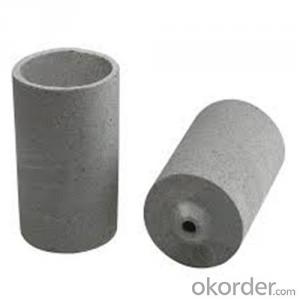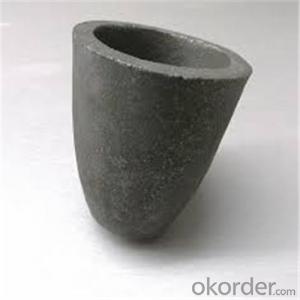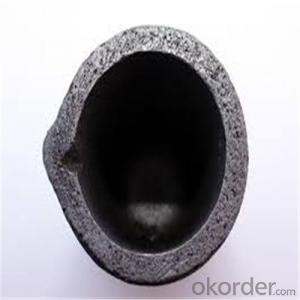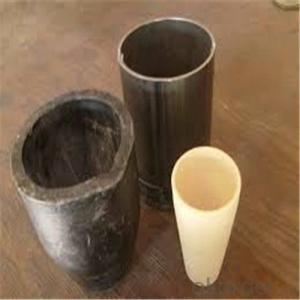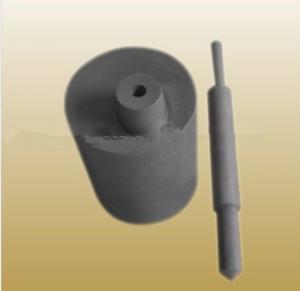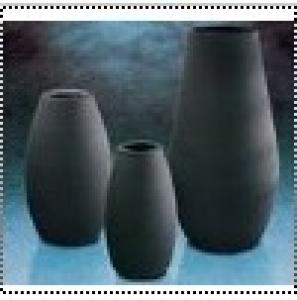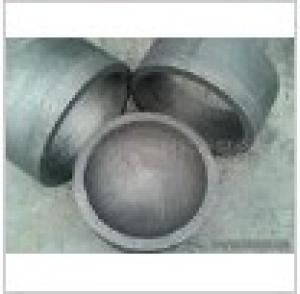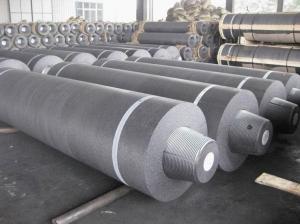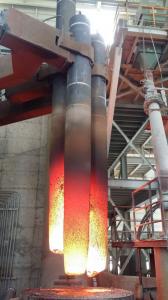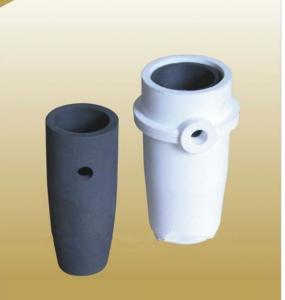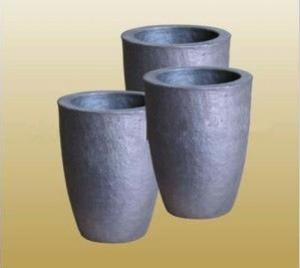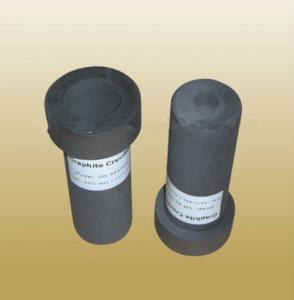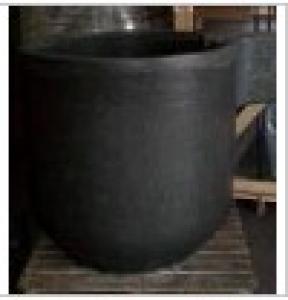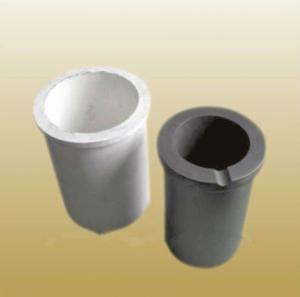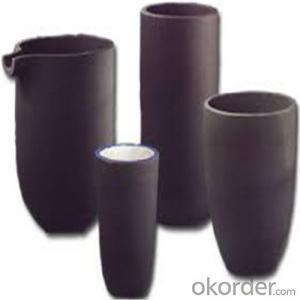Refractory Crucibles Sic Crucible For Melting Copper/Brass
- Loading Port:
- Shanghai
- Payment Terms:
- TT OR LC
- Min Order Qty:
- 1 pc
- Supply Capability:
- 1000 pc/month
OKorder Service Pledge
OKorder Financial Service
You Might Also Like
Quick Details for Refractory Crucibles Sic Crucible For Melting Copper/Brass/Aluminum
| Type: | High Strength, graphite crucible crucible | Application: | melting metal | Height: | as your requirements |
| Composition: | High Pure | Top Diameter: | 10-600mm | Bottom Diameter: | 10-1000mm |
| Place of Origin: | China (Mainland) | Brand Name: | Model Number: | ||
| Color: | Black grey | Si3N4%: | 5min | Fe2O3%: | 0.7max |
| C%: | 30-45 | Apparent porosity: | 30max | Refractoriness: | 1680 |
| Bulk Density: | 1.71min | Using life: | >5000 hours | MAX temperature: | 1600c |
Packaging & Delivery
| Packaging Details: | Seaworty packing or as per customer's detail requirement of graphite crucible. |
| Delivery Detail: | within 20-30 days after confirm order of graphite cru |
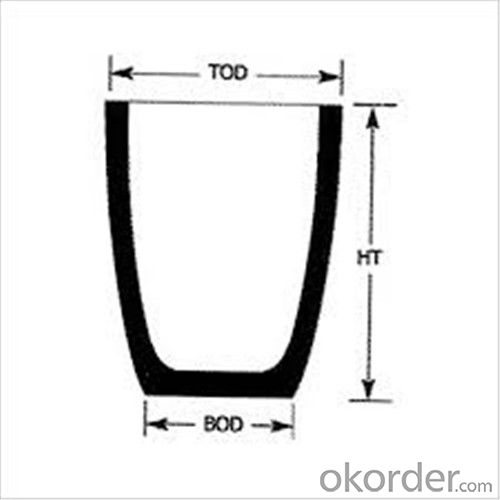

Refractory Crucibles Sic Crucible For Melting Copper/Brass/Aluminum
Physicochemical Properties
Type of Crucible | Type S | Type D |
Carbon Content/% | ≥38 | ≥45 |
Bulk Density/(g/cm3) | ≥1.70 | ≥1.85 |
Apparent Porosity/% | ≤29 | ≤21 |
Compression Strength/MPa | ≥20 | ≥25 |
Refractoriness/°C | ≥1400 | ≥1400 |
Type S: Clay graphite crucible
Type D: Isostatic pressing graphite crucible
Cited from CNS China National Standard of Graphite Crucible, which is solely drifted by TIANFU company.
Content Composition
C% | Sic% | AL2O3% | SIO2% |
45%-50% | 20%-30% | 10%-12% | 15-25% |
FAQ
1.What's your MOQ?
We will indicate the MOQ for each item in the quotation list. We accept the sample and trail order.
2.Can I negotiate the Prices?
Sure, we may consider discounts for bulk order of products.
3.How long will it take to complete my order?
For the stock items, we can arrange the shippment within 2~3days after received your payment. For the customized items, we will indicate the delivery time in the quotation list.
4.Can you give warranty of your products?
Yes, we extend a 100% satifisfaction guarantee on all items. Please feel free to provide timely feedback if you're not satisfied with N&D's Quality and Service. For the overseas orders, if there is a quality problem, please kindly to provide the picturers to show the problem by e-mail. We will provide the replacements to you at our cost according to actual conditions.
5.Can I visit you?
Sure. If you're a volume buyer and would like to visit our in-house products and production line, please contact us to make an appointment.
- Q:Is the yellow metal in the graphite rock gold?
- It would be more convenient if we could find the touchstone. From the proportion can be simply measured, the proportion of gold is very large.
- Q:Can a graphite crucible be used for silicon melting?
- Indeed, silicon can be melted using a graphite crucible. In the realm of high-temperature applications, the utilization of graphite crucibles is quite common, especially for the purpose of silicon melting. Graphite possesses a remarkable melting point and exhibits exceptional thermal conductivity, rendering it ideal for both confining and heating silicon until it reaches its melting threshold of 1414 degrees Celsius. Furthermore, graphite showcases commendable resistance to chemical corrosion, a crucial attribute when dealing with reactive substances such as silicon. Consequently, owing to its robustness, heat resilience, and chemical inertness, the employment of a graphite crucible remains highly favored for the process of silicon melting.
- Q:How do you prevent graphite crucibles from thermal shock during use?
- To prevent graphite crucibles from thermal shock during use, there are several measures that can be taken: 1. Preheating: Before using the crucible, it is important to preheat it gradually. This can be done by placing the crucible in a kiln or furnace and slowly increasing the temperature. This process allows the crucible to expand uniformly and minimizes the risk of thermal shock. 2. Avoid sudden temperature changes: Graphite crucibles should be heated and cooled slowly to avoid abrupt temperature changes. Rapid heating or cooling can cause thermal stress, leading to cracks or even breakage. It is advisable to use a programmable kiln or furnace that allows for controlled temperature ramping and cooling rates. 3. Use insulating materials: Insulating materials, such as ceramic fiber blankets or boards, can be used to surround the crucible during heating and cooling processes. These materials provide thermal insulation, reducing the rate of temperature change and minimizing the risk of thermal shock. 4. Proper handling: It is important to handle graphite crucibles with care to prevent accidental impacts or drops, which can cause cracks or fractures. Always use appropriate tools or tongs when moving or manipulating the crucible to avoid physical damage. 5. Avoid contact with water or other coolants: Graphite crucibles should not come into direct contact with water or other coolants while they are at high temperatures. This can cause rapid cooling and thermal shock. If cooling is necessary, it is recommended to allow the crucible to cool naturally in the ambient environment or use a controlled cooling process. By following these preventive measures, the risk of thermal shock in graphite crucibles can be significantly reduced, ensuring their longevity and performance in high-temperature applications.
- Q:How do you prevent graphite crucibles from overheating during use?
- One way to prevent graphite crucibles from overheating during use is to ensure proper insulation and cooling. This can be achieved by using a furnace or kiln with well-regulated temperature controls and adequate ventilation. Additionally, it is important to monitor the temperature closely and avoid sudden temperature changes, as this can cause thermal shock and potential overheating.
- Q:How does the erosion resistance of graphite affect the performance of a crucible?
- The performance of a crucible is significantly influenced by the erosion resistance of graphite. Graphite is renowned for its exceptional ability to withstand the gradual destruction caused by factors like heat, chemicals, and mechanical forces. In the case of a crucible, which is utilized for melting and holding substances at high temperatures, erosion resistance is of utmost importance in order to preserve the crucible's integrity and longevity. The erosion resistance of graphite ensures that the crucible can endure the harsh conditions it encounters during the melting process. To begin with, the erosion resistance of graphite helps prevent the crucible from deforming or cracking when exposed to high temperatures. Due to its high melting point and ability to withstand extreme heat, graphite is an ideal material for crucibles. Without erosion resistance, the crucible would be susceptible to thermal shock, resulting in cracks or failure. Additionally, erosion resistance is vital for maintaining the chemical stability and purity of the crucible. Graphite is chemically inert, meaning it does not react with most substances. This property allows the crucible to contain a wide range of materials without the risk of contamination. Moreover, the erosion resistance of graphite ensures minimal loss of graphite particles into the molten materials, preventing impurities from entering the final product. Furthermore, the erosion resistance of graphite contributes to the durability and overall performance of the crucible. Graphite crucibles are often subjected to mechanical stresses, such as stirring or pouring molten substances. The erosion resistance of graphite prevents the crucible from wearing away or deteriorating over time, guaranteeing that it can be used repeatedly without compromising its functionality. In conclusion, the erosion resistance of graphite is essential for the performance of a crucible. It helps maintain structural integrity, withstand high temperatures, preserve chemical stability, and enhance durability. Without erosion resistance, the crucible would be susceptible to failure, resulting in potential contamination, material loss, and reduced lifespan.
- Q:Can a graphite crucible be used for lead melting?
- Indeed, lead melting can be accomplished using a graphite crucible. Foundries and metallurgical industries often employ graphite crucibles to melt diverse metals, such as lead. With its high melting point, exceptional thermal conductivity, and chemical resistance, graphite proves to be an ideal material for high-temperature tasks like lead melting. Furthermore, graphite crucibles exhibit durability and the ability to endure repeated use, rendering them a cost-effective option for melting lead. Nevertheless, it is crucial to guarantee the graphite crucible's pristine condition, devoid of any impurities or contaminants that may compromise the melted lead's quality.
- Q:Can graphite crucibles be used for material synthesis?
- Yes, graphite crucibles can be used for material synthesis. Graphite has excellent thermal conductivity, chemical resistance, and high temperature resistance, making it suitable for various material synthesis processes such as melting, calcination, and fusion. Additionally, graphite crucibles can withstand rapid temperature changes and are inert, making them ideal for use in the synthesis of different materials.
- Q:Can graphite crucibles be used for carbon nanotube synthesis?
- Graphite crucibles are capable of being utilized in the synthesis of carbon nanotubes. Due to its high melting point and chemical stability at elevated temperatures, graphite serves as a suitable material for this purpose. In the process of synthesizing carbon nanotubes, a carbon source is commonly subjected to intense heat, and graphite crucibles have the ability to endure such extreme conditions without undergoing reactions or contaminating the nanotubes. Moreover, graphite crucibles possess efficient thermal conductivity, which aids in maintaining a consistent temperature throughout the synthesis procedure. Consequently, graphite crucibles are extensively employed in laboratories and industries for the fabrication of carbon nanotubes.
- Q:Are there any specific cleaning agents or methods recommended for graphite crucibles?
- There exist specific cleaning agents and techniques that are suggested for the purpose of cleaning graphite crucibles. Graphite crucibles are commonly employed in applications involving high temperatures, such as metal melting, and they can accumulate various impurities over time. A commonly suggested approach to clean graphite crucibles involves a combination of mechanical cleaning and chemical treatment. In mechanical cleaning, a soft brush or cloth is utilized to eliminate any solid debris or residue from the crucible. It is important to avoid using abrasive materials or engaging in harsh scrubbing, as this may result in damage to the crucible. Following mechanical cleaning, a chemical treatment is often required to remove any remaining impurities. Acidic solutions, for example hydrochloric acid or sulfuric acid, are frequently employed in the process of cleaning graphite crucibles. These solutions possess the capability to dissolve and eliminate organic and inorganic contaminants. However, it is crucial to be aware that handling and working with acid solutions can be hazardous and necessitates caution. It is recommended to wear personal protective equipment, such as gloves and goggles, and ensure adequate ventilation. Furthermore, it is of utmost importance to adhere to the manufacturer's instructions and guidelines for cleaning graphite crucibles. Certain crucibles may have specific requirements or limitations with regards to cleaning methods and agents, and it is vital to comply with these recommendations to prevent any damage to the crucible. In conclusion, while there are specific cleaning agents and techniques that are recommended for graphite crucibles, it is vital to exercise caution, follow safety guidelines, and consult the manufacturer's instructions to ensure proper cleaning and maintenance of the crucible.
- Q:Are there different sizes available for graphite crucibles?
- Indeed, graphite crucibles are offered in various sizes to cater to diverse needs and applications. These crucibles come in a plethora of sizes, ranging from petite ones suitable for jewelry making or minor laboratory experiments to more substantial ones used for industrial purposes such as metal casting or melting. The necessary size of the crucible is contingent upon the quantity of material to be melted or processed, as well as the unique demands of the application at hand. Consequently, an array of sizes is made available to satisfy distinct requirements and guarantee the optimal and proficient utilization of graphite crucibles.
1. Manufacturer Overview |
|
|---|---|
| Location | |
| Year Established | |
| Annual Output Value | |
| Main Markets | |
| Company Certifications | |
2. Manufacturer Certificates |
|
|---|---|
| a) Certification Name | |
| Range | |
| Reference | |
| Validity Period | |
3. Manufacturer Capability |
|
|---|---|
| a)Trade Capacity | |
| Nearest Port | |
| Export Percentage | |
| No.of Employees in Trade Department | |
| Language Spoken: | |
| b)Factory Information | |
| Factory Size: | |
| No. of Production Lines | |
| Contract Manufacturing | |
| Product Price Range | |
Send your message to us
Refractory Crucibles Sic Crucible For Melting Copper/Brass
- Loading Port:
- Shanghai
- Payment Terms:
- TT OR LC
- Min Order Qty:
- 1 pc
- Supply Capability:
- 1000 pc/month
OKorder Service Pledge
OKorder Financial Service
Similar products
New products
Hot products
Hot Searches
Related keywords
